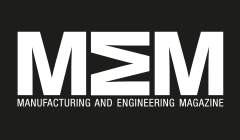Hyundai Opens New China Plant

Hyundai Motor has opened its fourth manufacturing plant in China in the city of Cangzhou in north eastern China. The new plant, Beijing Hyundai Motor Company Cangzhou Branch, has an annual capacity of 300,000 units. Hyundai will open another plant in Chongqing next year. The addition of the two plants – each with annual production capacity of 300,000 units – will lift its capacity by about half to 1.8m units a year. The company will also address the growing Chinese market appetite for green cars with its model strategy. “We will accelerate our efforts to achieve a market share of more than 10 percent again with the opening of Cangzhou factory,” Hyundai said. At the plant’s opening, Hyundai Motor Chairman Chung Mong-Koo looked ahead to a 10m cumulative sales target for the company in China, declaring a new vision for Hyundai Motor in the country. Chairman Chung said: “Completion of our Cangzhou Plant is the foundation that enables Hyundai Motor to make a new leap forward in China. Together, Hyundai Motor and Kia Motors can now produce up to 2.4 million cars annually in China with plants in operation at eight strategic Chinese sites.” The opening of the Cangzhou manufacturing plant coincides with Hyundai Motor’s 14th year of operation in China after it started exporting automobiles as Bejing Hyundai Motor Company (BHMC) on October 18, 2002. BHMC achieved cumulative sales of eight million units in August 2016. Hyundai Motor Company set out the opening of its new plant as part of a strategic initiative called ‘New Plant, New Model and New Strategy’. The Cangzhou Plant begins operations four years after Hyundai Motor’s third plant opened in Beijing in 2012. Hyundai says that the Cangzhou Plant’s competitive edge lies in its strategic location 200km southeast of Beijing, aligned with existing parts suppliers and Tianjin Port, Hyundai Motor’s logistics base. Built on a 1.92 million square meter site, with a floor space of 250,000 square meters, Cangzhou Plant is fully equipped with press, body, paint and assembly lines, in addition to an engine plant. The facility’s initial capacity of 200,000 units will manufacture strategically important small cars. It will expand to its maximum capacity of 300,000 units by 2018. The Cangzhou facility uses the ‘latest automation facilities’ in press, body, paint and assembly, as part of a flexible production system. The body line features a 100% fully-automated system that utilises 299 robots. New model ‘Verna Yuena’ At the Cangzhou Plant opening ceremony, Hyundai Motor unveiled Verna Yuena, the first model to be produced at new plant. Verna Yuena is described as a ‘strategic model designed after careful consideration of the needs of Chinese customers’. Hyundai says the Verna Yuena was developed ‘specifically to satisfy the demands of Chinese customers as a smart urban family sedan that competes successfully in this price-sensitive sector’. The Cangzhou Plant will produce the new model with a choice of two engines, a 1.6-litre, 120ps unit and a 1.4-litre with 100ps. ‘Blue Melody’ strategy Hyundai Motor also announced its future strategy in China under the name ‘Blue Melody’. Encompassing Hyundai Motor’s future direction, the name Blue Melody takes the first letters of Hyundai Motor’s ‘Blue’-branded products and services: Blue Ecommerce, Blue Link, Blue Outlet, Blue Drive and Blue Youth. The company says that the Blue Melody strategy focuses on customer satisfaction through ‘systematic customer management and differentiated service’. Through Blue Ecommerce, Hyundai Motor says it will ‘utilise big data to enhance convenience for customers by establishing an integrated customer-tailored platform as part of its digital marketing’. Blue Link provides what Hyundai describes as a new customer experience by applying Apple CarPlay and Baidu CarLife on Hyundai Motor flagship models. With Blue Outlet, Hyundai Motor will continue to ‘enhance its sales competitiveness in key regions across China’. Blue Drive focuses on eco-friendly cars while Blue Youth is aimed at providing creative experiences for people in their 20s and 30s. Manufacturing & Engineering Magazine | The Home of Manufacturing Industry News


